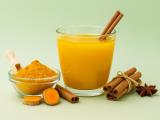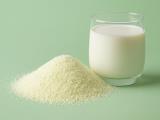Many people say that fiber is indigestible bulk that our bodies cannot digest or absorb. This is true and more! Fiber practically goes untouched through the stomach, small intestine, large intestine, and out of our bodies, yet they are essential for our digestive system.
Fiber primarily normalizes bowel movements. Fiber increases the weight and volume of stool, making it softer. This regulates digestion, as stool passes more easily through the intestines, resulting in fewer hemorrhoids and fewer pockets in the small and large intestines.
Fiber also helps lower cholesterol. Soluble fiber in beans, oats, and flaxseeds helps reduce mainly the level of bad cholesterol (LDL). Additionally, they help improve blood pressure and aid in overcoming various inflammations.
And lastly: with improved digestion and blood profile, body weight also improves. Fiber also causes us to be less hungry, prevents overeating, and because fiber-rich food is less energy-dense, we consume fewer calories.
Where to find fiber?
Interestingly, our fiber needs decrease with age. Generally, men under 50 need 38 grams of fiber per day, while older men only need 30 grams. For women, it's 25 grams, dropping to 21 grams after the age of fifty. So where can you find fiber?
1. Beans
In 100 grams of beans, you'll find 40% of the daily fiber requirement. Beans are also a good source of minerals (especially magnesium and iron) and contain some calcium. Because beans are rich in protein, they can be a meat substitute. Furthermore, beans are slowly digested, which can help with weight loss. Try adding beans to as many dishes as possible. A great example is Mexican cuisine which heavily features beans.
2. Artichokes
While artichokes may not be as common as some other vegetables, they are rich in magnesium and vitamin C. In 100 grams, they provide 36% of the daily fiber requirement. Artichokes can also be an interesting meat substitute, not just a salad addition in Italian cuisine, but also a tasty main course. Artichokes are still a hidden gem.
3. Lentils
100 grams of lentils contain 32% of the daily fiber requirement. You might be surprised by the high carb content, but these are slow carbs that do not spike blood sugar levels. Lentils used to be a common dish, but are now unfairly forgotten.
4. Avocado
The renaissance of avocados began with the new dietary paradigm that not all fats are harmful. Avocados contain a variety of important and nutritious elements and 28% of the daily fiber requirement. It's good to know that avocados have more potassium than bananas.
5. Berries
100 grams of raspberries, blueberries, and blackberries provide 28% of the daily fiber requirement. Additionally, they are rich in antioxidants, vitamins, minerals... Due to the combination of all these elements, berries are at the top of the list of healthy foods. They even aid in combating severe forms of cancer.
6. Prunes
Prunes are common in our regions yet often overlooked. During winter, they are among the most nutritious foods, and they are versatile, used as a side dish for meat, in fruit salads, or as an addition to desserts (some people often confuse raisins with prunes). In 100 grams of prunes, you'll find 28% of the daily fiber requirement.
7. Pasta
Pasta also contains fiber (18%), but this is true only for whole grain pasta. Recently, the opinion that pasta has high carbs has gained popularity. This is true. However, there are healthier pasta options; you just need to spend a little more time reading labels. And don't forget, you can always make your pasta at home.
8. Broccoli
Broccoli is rich in fiber (13%), vitamins, and proteins. By several criteria, broccoli is one of the healthiest foods of modern times. A fun fact: broccoli contains as much vitamin C as oranges.
9. Brussels Sprouts
Brussels sprouts are great in salads. Some halve them and grill them, others add them to soups or even pasta dishes... Its flavor enhances when seasoned with cayenne pepper and a bit of garlic powder. Brussels sprouts provide 10% of the daily fiber requirement, plenty of vitamin C, boost the immune system, regulate digestion, and are known for their high levels of antioxidants. Even if you are not a vegetarian, Brussels sprouts are a tasty argument to consider becoming one.
10. Cabbage
All leafy green vegetables have a high fiber content (lettuce, spinach), but cabbage deserves special mention. Cabbage is frequently featured in weight-loss diets and is highly nutritious, rich in minerals and vitamins. Cabbage provides 10% of the daily fiber requirement and is one of the most important foods in the winter. Did you know that Germans are the biggest consumers of cabbage, followed by Americans who cannot imagine hot dogs without cabbage?
Datum: 25. FEB 25 - GOOD TO KNOW
Are you getting enough fiber?
The body needs fiber for good digestion. Do you know where you can find the most fiber?
(FW)
 Would you like to be informed about news on the website?
Would you like to be informed about news on the website?
Just enter your e-mail
Fiber for good digestion
Sources of fiber
Soluble fiber benefits
High fiber foods
Healthy digestion and fiber
|
Copyright (c) Foodwhisper.com March 2018 |
π | Contact: info@foodwhisper.com |
About us | Facebook |  |









